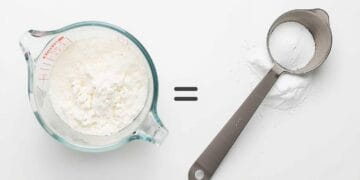How Many Quarters on a Roll
Have you ever found yourself at the bank, staring at those neatly wrapped cylindrical packages of coins and wondered exactly how many quarters are packed inside? Whether you’re a business owner preparing change for the day, a coin collector hunting for rare finds, or just someone who needs quarters for laundry day, understanding coin rolls is more useful than you might think. Let’s dive into everything you need to know about quarter rolls, from the standard count to their practical uses in everyday life.
Understanding Coin Rolls and Their Purpose
What Are Coin Rolls?
Coin rolls are standardized packages of coins wrapped in paper designed to make counting, storing, and transporting currency easier. Think of them as the fast-food value meal of the coin world—everything packaged neatly for convenience. These rolls follow specific standards set by financial institutions and the U.S. Mint to ensure consistency across the banking system.
Each type of coin has its own designated roll size, and quarters are no exception. The standardization means that whether you’re in New York or California, a roll of quarters will always contain the same number of coins and the same total value.
Why Do We Use Coin Rolls?
Imagine trying to count out hundreds of individual coins every time you needed to make a deposit or get change. Exhausting, right? Coin rolls solve this problem by pre-packaging coins in standard amounts. This makes transactions faster for banks, businesses, and individuals alike.
Coin rolls also serve a security purpose. When coins are properly rolled and sealed, it’s easier to detect tampering. Banks can quickly verify deposits, and businesses can efficiently manage their cash drawers without spending hours counting individual coins.
The Standard Number of Quarters in a Roll
Official U.S. Mint Standards
Here’s the answer you’ve been waiting for: a standard roll of quarters contains 40 coins. This has been the established standard for decades and is used universally across the United States banking system. Whether you’re getting rolls from a large national bank or your local credit union, you’ll always find 40 quarters in each properly rolled package.
This standardization isn’t arbitrary—it’s carefully calculated to create a convenient denomination that’s easy to handle, count, and transport while maintaining a reasonable weight and size for the roll.
Value of a Quarter Roll
Since each quarter is worth 25 cents and a roll contains 40 quarters, the math is straightforward: one roll of quarters equals $10.00. This makes quarter rolls particularly convenient for businesses that need exact change or individuals who regularly use coin-operated machines.
The $10 denomination strikes a perfect balance—it’s substantial enough to be useful but not so large that the roll becomes unwieldy or excessively heavy. This value point has remained constant, providing reliable standardization for financial transactions.
History of Quarter Rolls in the United States
Evolution of Coin Distribution
The practice of rolling coins dates back to the early 20th century when banks needed efficient methods to distribute currency. Before coin rolls became standard, loose coins were measured by weight or counted individually—a time-consuming and error-prone process.
As banking became more sophisticated and commerce expanded, the need for standardized coin packaging grew. The quarter roll format we use today emerged as part of broader efforts to streamline banking operations and create consistency across financial institutions nationwide.
Banking and Commerce Applications
Quarter rolls became especially important during the mid-20th century as coin-operated devices proliferated. Parking meters, payphones, laundromats, and vending machines all relied heavily on quarters, creating significant demand for efficiently packaged coins.
Today, even as digital payments become more common, quarter rolls remain essential for many businesses and services. The standardized roll format ensures smooth operations across countless transactions daily.
Physical Characteristics of a Quarter Roll
Dimensions and Weight
A roll of 40 quarters has specific physical characteristics that make it easy to identify and handle. The roll is cylindrical, measuring approximately 2.75 inches in length and 0.955 inches in diameter. These dimensions accommodate the size of individual quarters while creating a package that fits comfortably in hand.
Weight-wise, a full quarter roll weighs exactly 8 ounces (226.8 grams). This consistent weight is actually used by banks and coin-counting machines to verify that rolls contain the correct number of coins without having to open them. Pretty clever, right?
Wrapper Types and Materials
Quarter roll wrappers are typically made from heavy paper, though you might occasionally encounter plastic tubes. The paper wrappers usually feature colored stripes or markings—often orange or brown—to help quickly identify them as quarter rolls among other coin denominations.
Some wrappers are flat and require crimping at the ends, while others come pre-formed with one end already closed. Both types are designed to secure the coins while remaining easy to open when needed.
Where to Get Quarter Rolls
Banks and Credit Unions
The most straightforward place to get quarter rolls is your bank or credit union. Most financial institutions will exchange paper money for rolled coins free of charge for account holders. Simply visit a teller and request the number of quarter rolls you need.
Some banks may require you to order coin rolls in advance, especially if you need large quantities. It’s always a good idea to call ahead if you need more than a few rolls to ensure they have adequate supply on hand.
Coin Counting Machines
You’ve probably seen those coin-counting machines at grocery stores or retail locations. While these machines are primarily designed to count loose change, many locations also sell coin rolls. However, be aware that these services often charge fees or take a percentage of your total.
Fees and Considerations
Speaking of fees, coin-counting services like Coinstar typically charge around 11-12% of your total coin value if you want cash back. However, you can avoid fees by choosing store credit or gift cards instead. If you’re purchasing pre-rolled coins, there’s usually no fee beyond the face value of the coins themselves.
How to Roll Quarters Yourself
Materials Needed
Rolling your own quarters is surprisingly simple and can save you trips to the bank. You’ll need quarter roll wrappers (available at office supply stores, banks, or online), a flat surface to work on, and of course, your quarters. Some people find a coin sorting tray helpful, though it’s not essential.
The wrappers themselves cost just a few cents each, making this a very economical option if you regularly accumulate loose change.
Step-by-Step Rolling Process
First, count out exactly 40 quarters. Stack them flat on your work surface to make them easier to handle. If your wrapper is flat, fold it according to the instructions—usually, you’ll crimp one end closed first.
Slide the quarters into the wrapper, standing them upright so they stack neatly. Once all 40 quarters are inside, crimp or fold the open end to seal the roll. Give it a gentle shake to ensure the coins are settled, and you’re done! With practice, you can roll coins quickly and efficiently.
Common Uses for Quarter Rolls
Business and Retail Purposes
Retail businesses are among the largest users of quarter rolls. Cash registers need adequate change to serve customers throughout the day, and quarters are essential for making change on various transactions. Many businesses order quarter rolls weekly or even daily to maintain sufficient change supplies.
Restaurants, convenience stores, and small retailers particularly depend on quarter rolls to keep operations running smoothly. Running out of change can mean lost sales or frustrated customers, making reliable access to rolled quarters crucial.
Laundromats and Vending Machines
If you’ve ever done laundry at a laundromat, you know how essential quarters are. Many laundromats even have change machines that break bills into quarter rolls. Apartment buildings with coin-operated laundry facilities often see residents regularly requesting quarter rolls from their banks.
Vending machine operators also rely heavily on quarter rolls. While many modern machines accept bills and cards, quarters remain a primary currency for countless vending machines, arcade games, and parking meters across the country.
Coin Collecting
Coin collectors often purchase bank rolls of quarters to search for rare dates, mint marks, or error coins. This practice, called “coin roll hunting,” has become increasingly popular. Collectors buy sealed rolls hoping to find valuable quarters worth more than face value.
State quarters, territorial quarters, and the newer America the Beautiful series have made coin roll hunting even more popular. Finding a rare or uncirculated coin in a bank roll can be like discovering a small treasure.
Other Coin Roll Standards
Pennies, Nickels, and Dimes
Just as quarters have their standard roll size, other coins do too. Penny rolls contain 50 coins totaling $0.50, while nickel rolls hold 40 coins worth $2.00. Dime rolls contain 50 dimes, adding up to $5.00.
These standards ensure consistency across the banking system, making it easy for anyone to quickly calculate the value of rolled coins regardless of denomination.
Half Dollars and Dollar Coins
Less commonly seen are half dollar rolls, which contain 20 coins totaling $10.00, and dollar coin rolls, which also hold 25 coins worth $25.00. These denominations are less frequently used in everyday transactions, but they follow the same standardization principles.
Understanding all coin roll standards can be helpful if you work in banking, retail, or simply enjoy managing your personal finances with precision.
Tips for Managing Quarter Rolls
Storage Best Practices
If you keep quarter rolls at home or for business, proper storage is important. Keep them in a cool, dry place away from moisture, which can damage the paper wrappers. Many people use small boxes or drawer organizers to keep different coin denominations separated and easily accessible.
For businesses, a locked cash drawer or safe is essential for security. Even though quarters aren’t high-value items individually, they add up quickly, and several rolls represent significant cash.
Verifying Roll Contents
While most bank rolls are accurate, it’s not unheard of to occasionally find a roll that’s short a coin or two. If you’re depositing rolls you received from somewhere other than a bank, many financial institutions will ask you to open and verify the contents.
You can quickly verify a roll by weighing it—remember, a proper quarter roll should weigh exactly 8 ounces. A simple kitchen scale can help you check rolls before taking them to the bank, saving potential embarrassment or disputes.
Conclusion
So, how many quarters are on a roll? The answer is always 40, totaling $10.00 in value. This standardization has served the U.S. banking and commerce systems for decades, making coin transactions efficient and reliable. Whether you need quarters for your business, your laundry day, or your coin collecting hobby, understanding coin rolls helps you navigate these everyday transactions with confidence.
The humble quarter roll represents more than just packaged coins—it’s a testament to how standardization and efficiency make modern commerce possible. Next time you pick up a roll of quarters, you’ll appreciate the thought and history behind those 40 neatly wrapped coins.
FAQs
1. Can I get quarter rolls from any bank?
Yes, most banks and credit unions will provide quarter rolls to their account holders free of charge. Some banks may require advance notice for large quantities, so it’s best to call ahead if you need more than a few rolls.
2. How much does a roll of quarters weigh?
A standard roll of 40 quarters weighs exactly 8 ounces or 226.8 grams. This consistent weight allows banks to verify roll contents without opening them.
3. Where can I buy coin roll wrappers?
You can purchase coin roll wrappers at office supply stores, many banks (sometimes free), online retailers like Amazon, or coin collecting supply shops. They’re inexpensive, typically costing just pennies per wrapper.
4. Are all quarter rolls the same regardless of which quarters are inside?
Yes, whether the roll contains state quarters, territorial quarters, or standard Washington quarters, the standard is always 40 coins per roll totaling $10.00. The year and design don’t affect the roll quantity.
5. Can I deposit hand-rolled quarters at my bank?
Most banks accept hand-rolled coins from account holders, though policies vary. Some banks may ask you to open the rolls for verification, while others have coin-counting machines. It’s best to check your specific bank’s policy before bringing in large quantities of hand-rolled coins.









